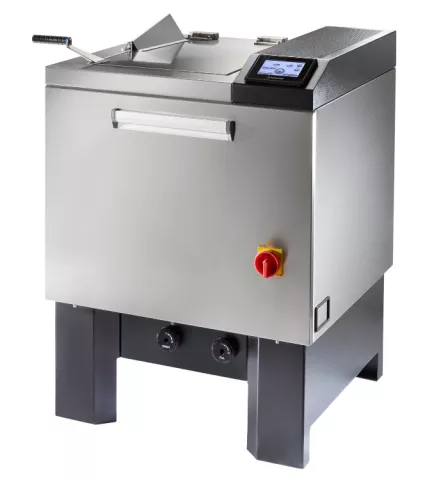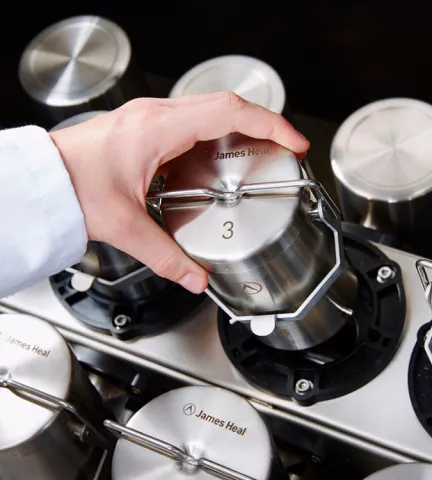Microplastics and microfibres - why should we be concerned?
Global plastic pollution continues to be under worldwide media scrutiny, and quite rightly given the devastating impact plastic is having to ecosystems and wildlife.
As part of this, major concerns are arising from microplastic and microfibre pollution. Microfibres are a sub category of microplastics, known as primary microplastics, whereas secondary microplastics mostly are made up from the degradation of larger plastic items. While the terms are often used interchangeably, the two are different. Not all microfibres are microplastics, as some are from natural sources such as cotton and wool.
These microscopic pollutants, defined as being smaller than 5mm in length, can quickly and easily enter the environment through wastewater, soil and air, and they spread particularly fast through marine ecosystems.
Microfibres have a persistent nature and whilst their impacts are not yet fully understood, evidence is growing. Due to their shape and/or added chemical finishes and dye stuffs, these fragments can cause harm when ingested by organisms, and have even been found in humans.
It is estimated between 6,490 to 87,165 tonnes of microfibres per year are released into the environment from natural and man-made textile sources.
Where do microfibres come from?
Fibre fragmentation is a process whereby small quantities of fibres, often referred to as microfibres, 'fragment' or break away from textiles during various stages of a product's lifecycle. By far the most significant agitator that causes this fragmentation is domestic laundering. During laundering, a small portion of fibres within a garment will break, releasing micro fragments which pass through wastewater, into rivers and subsequently to marine environments.
Fish and shellfish are amongst the sea life that ingest these microplastics, and a large quantity are subsequently consumed by humans, which is how most microplastics end up within the human body. As an example of how small these fragments can be, tiny plastic particles were found in a 3mm long water flea, which eventually clumped together and became lodged in its gut.

Microfibres and fashion: what steps are brands taking to combat this issue?
Organisations such as The Microfibre Consortium (TMC) are working to highlight the issues associated with this type of pollution, and lead the textile industry in reducing microfibre release to protect our environment. Their vision is to work towards zero impact from fibre fragmentation from textiles to the natural environment. Dozens of fashion and retailer brands have already signed up to The Microfibre 2030 Commitment and are working towards this shared goal.
The fashion industry has long been accused of being slow to act on environmental issues which directly link to pollution from microfibres as one example, though there are an increasing amount of positive initiatives for change within the fashion industry, with many leading fashion brands now having established a sustainability strategy to tackle issues such as microfibre loss from their products.
Most recently, we have been working with brands such as Under Armour on a new Fibre-Shedding Kit for their Test Method to quantify the release of fibres from their products, and also with Hugo Boss who have implemented their own 5 pillar sustainability strategy. Both of these brands have sustainability goals that they are working towards, which include specific aims to combat microfibre pollution from their products.

University of Leeds research and test methods for the measurement of microfibre release
Researchers at the University of Leeds worked on a study to understand the release of microfibres into the environment, which was published in a paper covering Quantification of microfibre release from textiles during washing in January 2023. Following this the TMC Test Method was developed through a collaborative relationship between The University of Leeds, The European Outdoor Group and The Microfibre Consortium, as well as the larger stakeholder network, following many rounds of testing and industry validation.
The test method presents a quantifiable process for the measurement of microfibre release, validated via correlation testing with numerous independent global laboratories. It also paved the way for the consideration and creation of standards for the quantification of microfibre release from the laundering of textile fabrics by European and international standard bodies. The current standards are as follows, the first relates to The Microfibre Consortium test method:
ISO 4484-1 - Determination of materials loss from fabric during washing
ISO 4484-2 - Qualitative and quantitative analysis of microplastics
ISO 4484-3 - Measurement of collected material mass released from textile end products by domestic washing method
What testing instruments can be used?
The TMC Test Method was demonstrated for the first time publicly in October 2023 during the Textile Exchange Conference, when delegates embarked on a field trip where they watched the test being performed on the James Heal GyroWash. An 8 vessel GyroWash having been used in the University of Leeds study that resulted in the test method being formulated.
An additional kit is required to finalise the measurement part of the test, which is also available from James Heal. Contact us for further information on the equipment needed to complete this testing with GyroWash.
The GyroWash is a reliable laboratory instrument designed to replicate domestic laundering conditions, and is an established piece of colour fastness equipment used in textile laboratories worldwide.


GyroWash consists of a heated bath containing a horizontal rotating shaft that supports a number of stainless-steel vessels. The vessels contain the test sample in a liquor with a prescribed number of stainless-steel bearings that replicate in-wash agitation and abrasion.
Advantages of using the GyroWash:
- Greater control and repeatability of test conditions
- Parameters such as water volume and temperature, rotation speed, and duration can be set far more accurately than for domestic washing machines
- The entirety of the test liquor can be filtered and analysed, reducing potential errors or uncertainty in results
- Small specimen size, fabric swatches are tested not full garments to assess fibre loss
- Reduced sample costs
- Less wash liquor used to test the specimens, the test itself is more environmentally friendly by producing less test effluent.
For this test method, GyroWash provides accurate quantification of microfibre release. The University of Leeds study demonstrated that the efficacy of filtration was in excess of 99%, and the influence of edge shedding was minimised through the use of effective edge sealing by seaming.
Get in touch
To find out more about GyroWash and measurement of microfibre release testing, contact our team.
Useful Links
Read more about GyroWash
Explore our laundering range: DynaWash | Wascator | Electrolux TD6-6LAB Dryer












